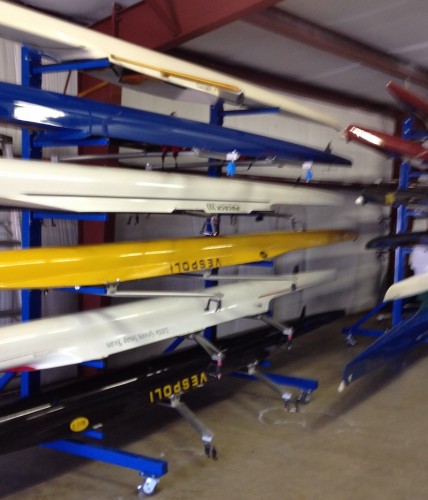As an engineer and rower, I frequently look at form and function and have provided several suggestions to the Hains Park Boathouse Improvement Committee (HPBIC). When developing a project, each feature should be considered for its benefit and its cost. The newest Boathouse plan for Hains Park in Old Lyme favors form over function, and is less sensitive to disruptions and cost. What is not known by those missing the Boathouse Committee meetings is that less expensive proposals have been raised that were able to meet the rowing program “needs” that did not “tear down” the existing, structurally sound Boathouse, which has one 28 ft. wide bay and one 16 ft. wide bay.
However, these proposals were dismissed by the majority of the Committee because they said the rowers need three 22 ft. wide bays with an associated increase in aisle width between boat storage racks from the existing 4-5 ft. to 10 ft. (although an 8 ft. minimum is recommended by the US Rowing Association.) Creative proposals to rearrange the boat storage layout recommended as a no-cost option by the boat rack supplier to achieve wider aisles with the existing 28 ft. and 16 ft. bays – with use of a single line of “rolling racks” in the larger bay (see photo below) – plus the addition of a third 22 ft. wide bay, were summarily dismissed.

For example, all of the boat storage needs and 10 ft. wide aisles can be accommodated by placing one line of rolling racks and two rows of fixed racks in the 28 ft. bay, and one row of fixed racks in the 16 ft. bay, plus two new sets of fixed racks in an “addition” (attached or detached) to the existing Boathouse. In the lowest cost option I proposed, a new boat shed (22 ft. x 84 ft.) would be built next to the existing Boathouse. Given that it is pre-engineered by a company specializing in storage structures, it can be constructed very quickly with limited disruption to the existing facilities, with an estimated cost of less than $200,000 – including ties to the existing structure.
The primary reason given for dismissing all of the more cost-effective “addition” options was that they would be 6-8 ft. wider than the new Boathouse proposal (at 66 ft.) and so they would not allow the replacement basketball court to remain next to the Boathouse. However, the committee now proposes moving the basketball court to a different area of the park both because of the Boathouse’s larger footprint and to save one maple tree. Thus, moving the basketball court is no longer a reason to reject consideration of any of the more cost-effective “addition” options.
Even if one allotted another approximate $150,000 to extend the back of the existing Boathouse for added flex-space, changing areas, and small storage/office spaces, the “addition” options have the potential to save hundreds of thousands of dollars over tearing-down the existing Boathouse and re-constructing “new.”
Currently, the majority of the committee is pushing to proceed with committing $670,000 on just Phase 1 of project (which includes the new Boathouse) before they have estimated a “total project cost” for the “total project plan”, which includes public toilet upgrades, pavilion, and the remaining site work. Thus, there is a significant risk that the full project cost with the new Boathouse plan may not come in within the $883,000 budget (comprising the $478,000 STEAP grant and $405,000 from Old Lyme taxpayers.)
At this point, seriously considering more innovative boat storage options that save the existing Boathouse is recommended. The rolling racks that can save the existing boathouse and significantly reduce the need for Old Lyme tax dollars should also be seriously evaluated or investment should be made in features that expand the functions of this park for the benefit of all.
Editor’s Note: The author , Stephen P. Dix, is a Professional Engineer who has been working with the Town of Old Lyme in various capacities for over 25 years, primarily supporting their Sewer Avoidance Program. More recently he teamed up with Lombardo and Associates to propose a more cost-effective solution that included water reuse. Previously, he served as Technical Director for Infiltrator Systems in Old Saybrook for 10 years following an appointment at West Virginia University as Director for the EPA’s National Small Flows Clearinghouse. Dix is recognized for his research in the science of soil-based treatment systems with publications and patents in this area. He currently runs his own consulting firm that helps environmental corporations develop new technology; the firm also trains engineers and professionals in this field.
I hope the Boathouse Committee will use this forum to respond. All the money to fund this project is taxpayer funds whether OL property tax funds or grant funds – this is our money and it needs to be spent wisely…
First-rate analysis and recommendation. I’ve used the rolling racks for my single at several sites and they both conserve space and make it easier for “older” oarsmen and women to manage their shells.
As I am now rowing an ocean shell that requires floor space, I hope the new and larger facility can be constructed as soon as possible.